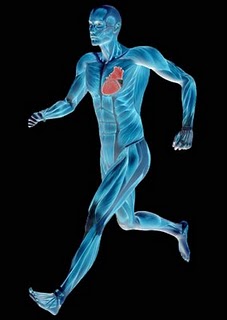Both types of medicines work on the renin-angiotensin-aldosterone system, a group of related hormones that act together to regulate blood pressure. ACE inhibitors lower blood pressure by blocking an enzyme early in the system so that less angiotensin, a chemical that narrows blood vessels, is produced, and blood vessels can remain wider and more relaxed. ARBs block receptors in the blood vessels that angiotensin attaches to, diminishing its vessel-constricting effect.
They both work but an analysis of real-world data shows that ARBs may be less likely to cause medication side effects while ACE inhibitors are the most popular.

The findings are based on an analysis of eight electronic health record and insurance claim databases in the United States, Germany and South Korea that include almost 3 million patients taking a high blood pressure medication for the first time with no history of heart disease or stroke.
The AHA/ACC 2017 Guideline for the Prevention, Detection, Evaluation and Management of High Blood Pressure in Adults says the primary medications for treating high blood pressure are thiazide diuretics, ACE inhibitors, ARBs, and calcium channel blockers as they have been shown to reduce cardiovascular events. Physical activity and other lifestyle changes are recommended for managing all levels of high blood pressure, even if medication is required.
Health records for patients who began first-time blood pressure-lowering treatment with a single medicine between 1996-2018 were reviewed for this study. Researchers compared the occurrence of heart-related events and stroke among 2,297,881 patients treated with ACE inhibitors to those of 673,938 patients treated with ARBs. Heart-related events include heart attack, heart failure or stroke, or a combination of any of these events or sudden cardiac death recorded in the database. The researchers also compared the occurrence of 51 different side effects between the two groups. Follow-up times varied in the database records, but they ranged from about 4 months to more than 18 months.
They found no significant differences in the occurrence of heart attack, stroke, hospitalization for heart failure, or any cardiac event. However, they found significant differences in the occurrence of four medication side effects. Compared with those taking ARBs, people taking ACE inhibitors were:
3.3 times more likely to develop fluid accumulation and swelling of the deeper layers of the skin and mucous membranes (angioedema);
32% more likely to develop a cough (which may be dry, persistent, and bothersome);
32% more likely to develop sudden inflammation of the pancreas (pancreatitis); and
18% more likely to develop bleeding in the gastrointestinal tract
The study is limited by wide variation in the length of time patients were included in the different databases. Although many people were followed for a long period of time, those who had shorter follow-up periods may not have taken the medications long enough to experience their full benefits in preventing cardiovascular disease events.
Most of the participants taking ACE inhibitors (80%) were taking lisinopril, and the most used ARB (45% of those taking this class of medication) was losartan, so the results may not be fully generalizable to other medicines in these classes. It is also important to note that results from this analysis of first-line therapy may not be generalizable to people with hypertension who have been prescribed combination treatment or who switch from one type of medication to another.





Comments